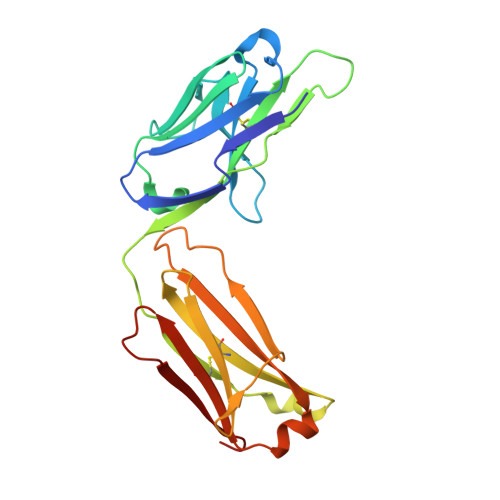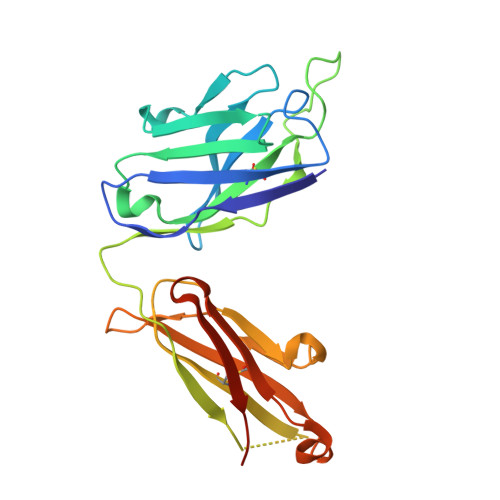Dramatic activation of an antibody by a single amino acid change in framework.
Liang, W.C., Yin, J., Lupardus, P., Zhang, J., Loyet, K.M., Sudhamsu, J., Wu, Y.(2021) Sci Rep 11: 22365-22365
- PubMed: 34785671
- DOI: https://doi.org/10.1038/s41598-021-01530-w
- Primary Citation of Related Structures:
7RCO - PubMed Abstract:
Antibody function is typically entirely dictated by the Complementarity Determining Regions (CDRs) that directly bind to the antigen, while the framework region acts as a scaffold for the CDRs and maintains overall structure of the variable domain. We recently reported that the rabbit monoclonal antibody 4A11 (rbt4A11) disrupts signaling through both TGFβ2 and TGFβ3 (Sun et al. in Sci Transl Med, 2021. https://doi.org/10.1126/scitranslmed.abe0407 ). Here, we report a dramatic, unexpected discovery during the humanization of rbt4A11 where, two variants of humanized 4A11 (h4A11), v2 and v7 had identical CDRs, maintained high affinity binding to TGFβ2/3, yet exhibited distinct differences in activity. While h4A11.v7 completely inhibited TGFβ2/3 signaling like rbt4A11, h4A11.v2 did not. We solved crystal structures of TGFβ2 complexed with Fab fragments of h4A11.v2 or h4A11.v7 and identified a novel interaction between the two heavy chain molecules in the 2:2 TGFb2:h4A11.v2-Fab complex. Further characterization revealed that framework residue variations at either position 19, 79 or 81 (Kabat numbering) of the heavy chain strikingly converts h4A11.v2 into an inhibitory antibody. Our work suggests that in addition to CDRs, framework residues and interactions between Fabs in an antibody could be engineered to further modulate activity of antibodies.
- Department of Antibody Engineering, Genentech Inc., 1 DNA Way, South San Francisco, CA, 94080, USA.
Organizational Affiliation:


















